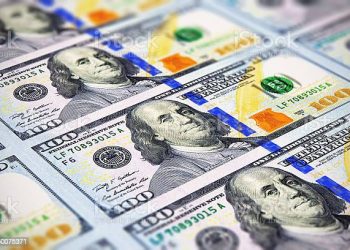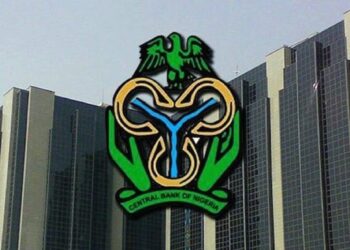
As at close of business yesterday, Thursday 9th September 2021. The naira to dollar rate depreciated to a new record low of N540/$1 compared to N535/$1 recorded in the previous business day.
The tenacious fall of naira during this period has been associated with the banking sector being unable to meet the demand for large amount of foreign exchange particularly the dollar in the forex market. This has created a partial monopoly where by black market operators and suppliers provide these currencies at a somewhat dictum price.
On the other hand, the official market for foreign exchange known as the Investors and Exporters window the exchange rate between the naira and the US dollar closed at N411.67/$1, This is over a N100 difference between the official and parallel market.
The exchange rate depreciated against the US dollar on Thursday 9th September 2021 to close at N411.67 to a dollar, representing a 0.04% fall compared to N411.5/$1 recorded in the previous trading day.
The opening indicative rate closed at N411.43/$1, a 15 kobo appreciation compared to N411.58/$1 recorded on Wednesday, 8th September 2021.
An exchange rate of N412.85 to a dollar was the highest rate recorded during intra-day trading before it settled at N411.67/$1, while it sold for as low as N400/$1 during intra-day trading.
INTERNATIONAL FOREIGN EXCHANGE
The dollar edged higher Friday, set for a winning week as traders reassess the likely timing of the start of the Federal Reserve’s stimulus withdrawal helped by concerns about the strength of the global recovery, while the euro received minimal support from the European Central Bank.
At 2:55 AM ET (0755 GMT), the Dollar Index, which tracks the greenback against a basket of six other currencies, edged higher to 92.505, on course for a 0.4% weekly rise, its first winning week in three.
rose 0.2% to 109.91, edged higher to 1.1826, was up 0.1% at 1.3845, while the risk sensitive climbed 0.1% to 0.7376.
The dollar has rebounded, to a certain extent, from last week’s low of 91.941, its weakest level since the start of August, as traders have started to reconsider the likelihood of the Federal Reserve’s tapering its bond-buying program in reasonably short order.
Last Friday’s weak suggested this would be delayed, but since then the showed a large number of unfilled job openings and fell on Thursday to the lowest level in almost 18 months.
Additionally, Fed Governor Michelle Bowman stated last Thursday that the weak August labour report won’t throw the central bank off course.
Across the pond, the European Central Bank said it would cut its under its Pandemic Emergency Purchase Program over the coming quarter.
However, this only provided minor support for the single currency as this was widely expected and seen as only a token step towards removing the central bank’s vast stimulus measures.
“We continue to think that the Fed will be faster in changing its monetary policy setup, and see more downside potential for the EUR/USD,” said analysts at Nordea, in a note.
Elsewhere, Britain’s economy barely grew in July, with its rising by just 0.1% from June, the weakest expansion since January when the country went back into strict lockdown rules.
This was considerably below the month-on-month growth of 0.6% expected, and followed a sharp increase in Covid-19 cases in the month, resulting in thousands of workers having to self-isolate at home.
fell 0.1% to 6.4446, heading for its weakest closing level since June, with the Chinese yuan helped by news of a between Presidents Xi Jinping and Joe Biden, raising hopes of improved relations between the two countries.
Finally, dropped 0.3% to 72.7915 ahead of the latest policy-setting meeting by the later in the session.
The central bank is expected to raise its key benchmark rate for the fifth meeting in a row as consumer prices rose by 6.7% last month, the highest level in five years, and way above the central bank’s 4% inflation goal.










